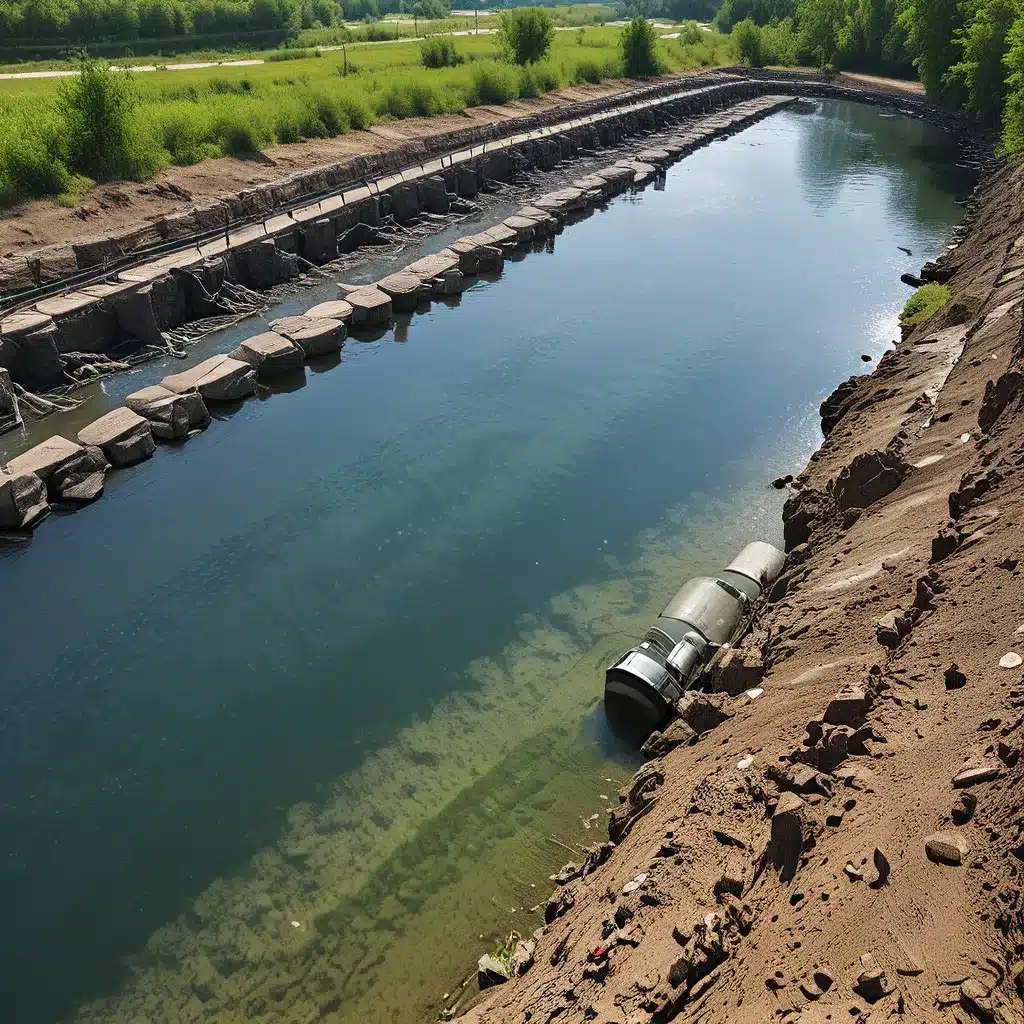
Alright folks, buckle up – we’re about to dive deep into the fascinating world of the water-energy nexus and how it’s transforming the game when it comes to environmental compliance. This is the kind of stuff that gets me pumped, so let’s not waste another second and jump right in!
Unraveling the Water-Energy Puzzle
You know, it’s funny – when we think about the big environmental challenges we face, water and energy are often treated as separate issues. But the reality is, they’re actually two sides of the same coin. The water-energy nexus is this intricate, interdependent relationship that’s absolutely crucial for ensuring a sustainable future.
Think about it – producing energy requires a ton of water, whether it’s for cooling power plants, extracting fossil fuels, or generating hydropower. And on the flip side, treating and transporting water takes a massive amount of energy. It’s this endless cycle of resources feeding into one another, and if we don’t manage it just right, well, let’s just say the consequences can get pretty messy.
That’s why understanding the water-energy nexus has become such a critical area of research and innovation. Experts have been developing all sorts of tools and frameworks to help us better evaluate and monitor progress towards water, energy, and food security. And let me tell you, the latest developments in this field are nothing short of game-changing.
Governing the Nexus
One of the key insights from the research is that governance – that is, the policies, regulations, and decision-making processes around water, energy, and food resources – plays a crucial role in the overall security of the nexus. It’s not enough to just have the resources available; we need effective governance systems in place to ensure they’re being managed and distributed equitably and sustainably.
Think about it this way – a country might have an abundance of water, energy, and food resources, but if their governance structures are weak or fragmented, they’re still going to struggle with things like access, affordability, and long-term reliability. It’s like having all the ingredients for a gourmet meal, but no chef to bring it all together.
That’s why the latest advancements in water-energy nexus research are putting a big emphasis on incorporating governance indicators into the assessment frameworks. By looking at things like government budgets for water and sanitation, energy import/export policies, and the implementation of national food security strategies, researchers can get a much more holistic and accurate picture of a region’s water-energy-food (WEF) nexus security.
Applying the Nexus in Southern Africa
And speaking of regions, the researchers in this field have been particularly focused on the Southern African Development Community (SADC) – a group of 16 countries in the southern part of the African continent. This area is seen as an ideal testbed for the water-energy nexus framework, given the shared natural resources, complex political dynamics, and vulnerability to climate change that the countries in this region face.
You see, in places like the SADC, the interconnectedness of water, energy, and food systems is painfully obvious. Droughts can devastate agricultural production, which in turn impacts energy generation and availability of clean water. And those kinds of cascading effects can have serious ripple impacts on everything from public health to economic stability.
That’s why the researchers have been working hard to develop a new, more comprehensive WEF nexus index model that can help these countries – and really, any region facing similar challenges – better understand and address the complex web of dependencies at play. By incorporating governance indicators alongside the traditional measures of resource availability and accessibility, this new index is poised to be a game-changer when it comes to informing integrated resource planning and management strategies.
Navigating the Uncertainty
Of course, as with any complex system, there’s always going to be a certain amount of uncertainty involved. That’s why the researchers didn’t just stop at developing the new WEF nexus index – they also put it through the wringer with a rigorous uncertainty and sensitivity analysis.
They used a quasi-Monte Carlo simulation approach to assess how much variability there might be in the index’s final output, based on all the different modeling decisions and assumptions that go into its construction. And let me tell you, that’s no small feat – we’re talking everything from how the individual indicators are normalized to the specific algorithms used for aggregating them into the final index score.
But the reason they went to all that trouble is simple: they wanted to make sure this new WEF nexus index is as robust and reliable as possible. By quantifying the uncertainty and understanding which modeling choices contribute the most to that uncertainty, the researchers can help policymakers and planners make more informed decisions when it comes to addressing water, energy, and food security challenges.
Revolutionizing Environmental Compliance
And that, my friends, is where the real magic happens. Because when you’ve got a comprehensive, data-driven tool like the WEF nexus index – one that accounts for the critical role of governance and can withstand the scrutiny of rigorous uncertainty analysis – you’ve got a powerful asset for revolutionizing environmental compliance.
Imagine a world where governments and industries aren’t just scrambling to put out fires, but are actually able to proactively plan and coordinate their efforts around water, energy, and food resources. Where companies like Inland Waters Inc. aren’t just focused on reactive water treatment, but are working hand-in-hand with policymakers to implement sustainable, integrated solutions that address the nexus as a whole.
It’s an exciting prospect, isn’t it? And the best part is, it’s not just a pipe dream – the research and innovations happening in this space are already laying the groundwork for a future where environmental compliance isn’t a burden, but an opportunity to build a more resilient, equitable, and sustainable world.
So buckle up, folks – the water-energy nexus revolution is just getting started, and I for one can’t wait to see what the future holds.


